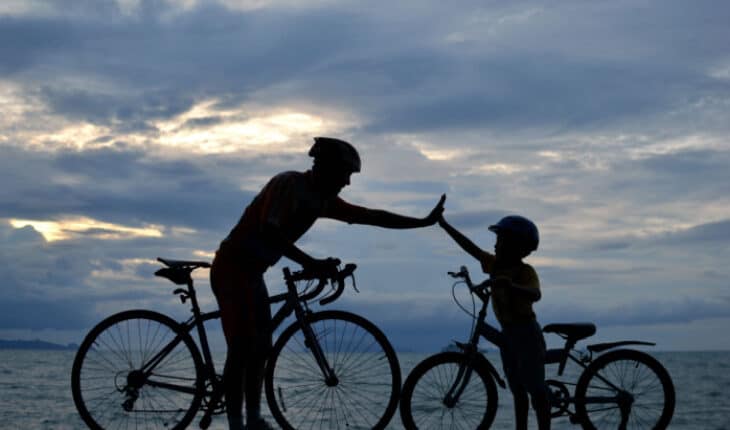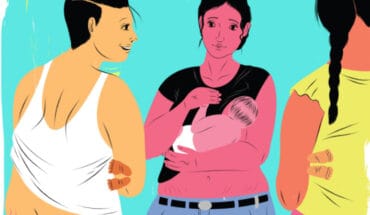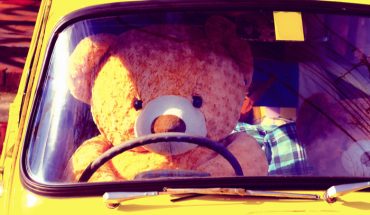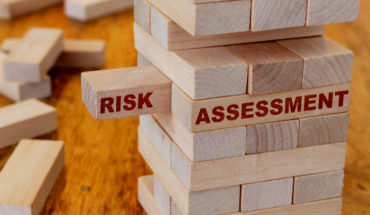Follow our simple steps to stay safe wherever you are going and whoever you are with, to help avoid the additional risks of accidents the dark can bring.
Keeping Children Safe in the Dark
Visibility is key here. Children need to be seen, not just by other motorists and cyclists, but by other pedestrians. It is vital to teach your children good road safety basics from an early age. Explain to children why they should not run across the road, show them how to identify safe places to cross and reinforce the importance of road safety. It is unsafe for young children to run ahead from their accompanying adult, or to whizz past on their scooters. Drivers may not spot a child on their own.
Encourage your teenagers to retain a sense of awareness. Discourage them from having their headphones on and make sure they are focusing on their surroundings, not their phones. Being pre-occupied and distracted will make them more vulnerable, both to being robbed or hit by a car.
Hold their hand on dark nights
It is good advice to always hold little one’s hands especially near roads. Be prepared if something scares them and they panic and run.
Visibility on dark nights
Think about what your child is wearing. Some school uniforms are dark. They are safer if they are visible, and you can easily add high-visibility reflective strips on their clothing, school bags or bike helmets. Additionally, they could carry a torch.
Driveway safety on dark nights
Research from RoSPA shows that since 2008, at least 28 children have been killed on, or near, the driveways of their home. With 25 of these deaths being a child being hit by a reversing vehicle. Tragically most of the victims were toddlers aged between one and two years old. The rest were aged between three to seven years old. These ages suggest that poor safety awareness and visibility played a key part. According to RoSPA, it is not until the age of four or five years that children begin to understand the concept of danger and begin to take notice of warnings given to them.
Additionally, in the majority of these cases, the driver of the vehicle was an adult member of the child’s family, a neighbour or a visitor to the house. Sadly, this also happened at the school gates where my cousin attends. The mother accidentally reversed over her child and killed them. Sometimes in our hurry to move onto the next thing, a lapse in concentration can have catastrophic consequences.
The darker conditions in Autumn and Winter mean it is even more important to double check that your pets and children are safely out of harm’s way before you drive off. Take our First Aid for Drivers course to learn how to help in a road related injury.
Scooter safety on dark nights
Micro scooters are hugely popular, both as a means of play and method of commuting for both children and adults. There are no official UK statistics for accidents involving non-motorised scooters. However, in New Zealand, the figures supplied by the Accident Compensation Corporation show the number of child scooter-related injury claims rose from 697 in 2008 to 6,474 in 2012. Of these, 80% were due to loss of balance or control and 10% by collisions. Once you factor in the increasing darkness and children being harder to spot, the potential for a scooter accidents rises.
Scooter solution
Insist children on scooters stay close to their accompanying adult and learn to stop at junctions and driveways. Make sure the children and their scooters are clearly visible to other road users and pedestrians. You can buy luminous accessories to hang from the scooter and there are cool bands, lights and reflectors that children love wearing and sticking on their clothes.
Keeping Children Safe in the Dark – What about Teens?
As children grow up and become more independent they become more at risk when they start walking themselves to school and are far more likely to become a casualty of a road accident. In fact, in 2017, 5,838 children aged under 15 were injured in road accidents. Furthermore, the peak times for the number of child pedestrians who died or were seriously injured are the ‘school-run’ periods between 8-9am and 3-4pm.
Be aware
As any parent knows it can be very difficult to get a teenager to part from their mobile phone. Whether they are talking to friends or listening to music on their mobile, they can be distracted. As a result, they are less aware of dangers in their surroundings such as other people or traffic. Furthermore, the dark conditions increase the risk of danger. If your teenager insists on wearing their headphones, encourage them to opt for the ear bud types and ideally only use one side. Often teenagers walk in packs and are chatting and showing off and simply not paying attention. Sadly it is often on these occasions that accidents can occur.
Dark nights and stranger danger
If your child travels on their own, encourage them to take the safest and best-lit routes and to avoid dark shortcuts. Encourage them to walk confidently, even if they don’t feel it, especially in the dark. Help them work out strategies for dealing with difficult situations in the dark so that they know what to do in an emergency. For example, shouting for help if someone approaches them in an aggressive manner. Ensure they know to immediately give up any valuables if someone tries to mug them. Possessions can be replaced, but lives are lost too swiftly.
General road sense
Children and teenagers should be aware of basic road sense such as ensuring they walk on the road facing the oncoming traffic. The Highway Code states that “If there is no pavement, keep to the right-hand side of the road so that you can see oncoming traffic. Electric cars are quiet, so you may not hear them coming.
Cyclists and the dark
It is obviously essential for cyclists to stay visible while cycling at night. Therefore, when cycling in the dark make sure to set up your bike accordingly. Book onto our First aid for Cyclists course to equip you with knowledge to be able to help someone who has been in a cycling accident.
Legal lights
If you are on the roads when it’s dark, then your bicycle is legally required to have both lights and reflectors fitted. Your front light must be white and offer 110-degree visibility. This requirement is to ensure that the cyclist visible from different angles.
Rear is red
Your rear light must be red. In addition, each pedal must also have a red rear reflector and BS6102/2 amber reflectors on the front and rear. To give further visibility from the side, you should also consider spoke reflectors.
Check your batteries
Remember that in winter, the light can fade quickly. As a result, a journey that starts in daylight can finish in the dark. Get in the habit of checking your light batteries on a regular basis and replace those that are low.
Keep seen and safe
Once again, high visibility clothing is an effective way to stay visible to other road users. Wearing reflective clothing on the body – in particular on the body parts which move such as gloves or shoes, can help you keep seen and safe. Furthermore, adding a reflective strip on a backpack or jacket increases your visibility too. An extra suggestion is for cyclists to wear a rear light on their backpack or on their helmet. This has the benefit of being at eye level for drivers approaching them on the road behind.
Dog walking & the dark
As any dog walker knows, a dog walk can sometimes turn into an unpredictable outing. This is because dogs can be inquisitive creatures and keen to have new adventures. However, dog owners should be aware of the additional risk of the dark, especially those involving busy roads, pedestrians and other hazards such as potholes, which are difficult to spot in poor light. There are several ways to keep you and your dog safe whilst out getting exercise:
Tried and tested
Rather than trying new routes in the dark, stick to tried-and-tested dog walks when taking your pet out at night. Stick to well-lit paths and avoid dark unlit parks and commons.
Lead by example
Ensure that both you and your pet both wear highly-visible clothing so you can clearly be seen by others. You can also opt for dog leads and collars which are reflective, or which come with flashing lights to increase your pet’s visibility. These can also help you to locate your pet in the dark.
Carry a torch with you. Or better still, wear a head torch so that your hands are free to manage the dog lead.
Keep them to heel
It is better to keep your dog on a lead in the dark, especially near traffic. You are far more likely to lose your pet in the dark. Additionally, road traffic accidents involving pets are common and increase during hours of darkness.
Stranger danger
If your pet is of a nervous disposition, then coming across other dogs in the dark can be even more stressful for them. Keeping your dog on a lead can help you to manage these unexpected encounters with other dogs.
Hazards in the dark
The dark can mask potential hazards such as potholes, broken glass and sharp objects which could cut your pet’s paws. It can also cover dangers such as sudden drops on the other side of walls, or hidden bodies of water.
- What is a seizure? - 13th March 2025
- Febrile Convulsions and Seizures in Children - 13th March 2025
- Why women are less likely to receive CPR or survive cardiac arrest - 6th March 2025






